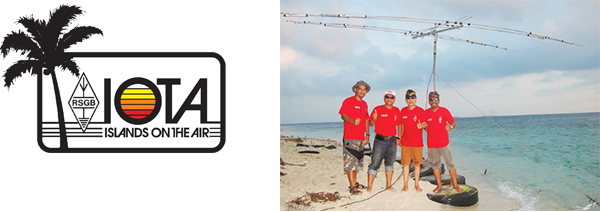IOTA FAQ

Islands On The Air (IOTA) is a programme designed to promote activity on the amateur bands in a way that provides enjoyment, fun and, if you want it, a challenge. Unlike the ARRL’s DXCC Programme which majors on contacts with countries, IOTA has as its purpose the making of two way contacts with fellow amateurs located on islands worldwide. Yes, there are hundreds of thousand such islands but IOTA has corralled them into 1200 IOTA groups, some with just one qualifying island, usually a large one, and others with more than 100 qualifying islands. The aim is to make one confirmed contact with a station in each of the 1200 groups. Just over 1100 have so far been activated, with some very remote ones remaining to be visited. As many as 700 groups have in some years been put on the air, so there are plenty to work.
The IOTA website can be found at https://iota-world.org.
First, go to the IOTA website and register as a participant by completing the web form. This allows you to build an island score online. Then work island stations in 100 IOTA groups and get the QSL cards. If you work stations in the annual IOTA Contest and submit a log, you can avoid the need to get cards for contacts where the QSO details match up with your contacts. When you have worked 100 groups in all seven continents, submit an application online on the website to your Checkpoint detailing the contacts. Application acceptance leads to you being listed in IOTA’s annual listings which are published on the IOTA website. From there you can progress with a higher score into the IOTA Honour Roll. At various stages there are incremental certificates to be gained as well as at the highest levels prestige awards.
The mystique of islands is strong the world over and this makes the IOTA programme truly international in its reach. Just listen to the pile-ups generated by IOTA DXpeditioners—from Europe, the Americas, Japan and across Asia, in fact everywhere. No part of the world has failed to be reached by IOTA. As you read this, groups of aficionados somewhere are planning their next IOTA operation. With the internet, multinational teams can be assembled with an ease that could scarcely be dreamed about in years gone by. Resident amateurs in many countries are eager to cooperate with any project to activate islands in their area. Add to this the help and advice readily available from locally appointed IOTA Checkpoints and, where they exist, Regional IOTA Management Teams. By being an international programme, IOTA is your programme.
Go for both. Every contact with an IOTA island counts as a DXCC entity. Every contact with a DXCC island entity counts for IOTA. The two programmes are complementary. There is every reason to grow scores in both simultaneously. IOTA is not a multi-band programme—one contact with each group is enough—so chasing IOTA contacts should not be overly time-consuming. Many DXers opt to concentrate on DXCC until the pace of new ones reduces at which point they become interested in IOTA. This risks loss of contacts with the rarer IOTA groups that seldom receive visits. It’s always best to work these when they are available.
A diminishing number of IOTA enthusiasts have been pursuing islands from the start of the programme in 1964. The vast majority are recent enthusiasts. It is important that all island chasers have the opportunity to get to the top of the IOTA Honour Roll, dependent only on their own level of activity and operating prowess and on the islands being activated. If the IOTA Committee decides for any reason that a group has to be deleted, the credits will after an agreed period also be deleted. There is no ‘Deleted IOTA Groups’ list. This presents all participants with a level playing field.
The concept of a level playing field (see previous FAQ) requires that new and existing participants do not feel the number of groups is ever-increasing and out of reach, or rather attainable only by those who have limitless time available. The cap of 1,200 groups is an important feature of the programme. Although constrained in this way, the list includes all or at least 99.9 percent of the islands of the world’s oceans that meet IOTA qualification criteria and appear on a scale map of 1:1,000,000.
The main frequencies on SSB are 28.560, 28.460, 24.950, 21.260, 18.128, 14.260, 7.055 and 3.755MHz and on CW 28.040, 24.920, 21.040, 18.098, 14.040, 10.115 and 3.530MHz. No specific frequency has been nominated for 7MHz CW but it is recommended that operations should include a frequency above 7.025MHz when the band is open to North America. These frequencies are not reserved exclusively for the making of island contacts but are shared with others on a normal non-interference basis.
A list of Checkpoints and Contact Points is provided at Annex A of the IOTA Directory.










